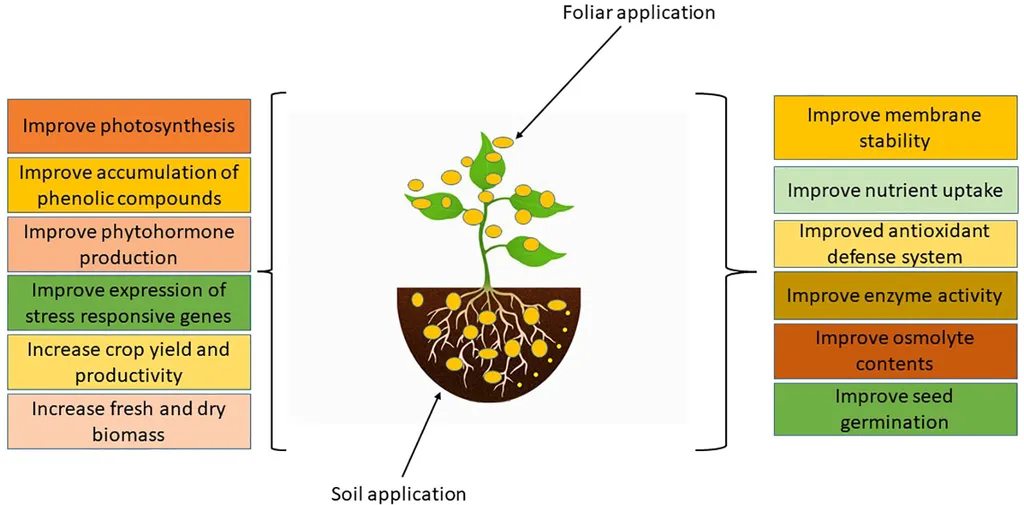In the heart of Kashmir, a team of researchers led by Tahira Akhter Bhat from the Department of Botany at the University of Kashmir is unraveling the intricate dance between nanoparticles and plant systems. Their work, published in the journal ‘Plant Nano Biology’ (which translates to ‘Plant Nano Science’), is shedding light on how these tiny particles can bolster plants against stress and even enhance their nutrient uptake, with potential ripple effects for agriculture and the energy sector.
Nanoparticles, which are minuscule particles ranging from 1 to 100 nanometers, have emerged as powerful tools in plant science. They offer unprecedented opportunities to improve stress tolerance, nutrient supply, and even fend off pathogen infections. However, their interactions with plants are complex and dose-dependent, necessitating a deeper understanding of their functionalization, physiological impacts, and potential toxicity.
Bhat and her team have taken a comprehensive, omics-based approach to understand these interactions. “We’ve looked at the entire spectrum of plant molecular responses, from transcriptomic and proteomic changes to metabolomic and ionomic modulations,” Bhat explains. This holistic view has revealed that functionalized nanoparticles can trigger stress tolerance by modulating antioxidant defenses, hormone signaling, and secondary metabolism.
The functionalization of nanoparticles is a game-changer. It allows for targeted delivery and controlled release mechanisms, improving bioavailability and reducing environmental impact. However, the researchers caution that excessive exposure can generate oxidative stress, metabolic disturbances, and even phytotoxicity.
The study also delves into the environmental fate of nanoparticles, their adsorption in plant tissues, and their impact on soil microbiota. Bhat emphasizes the need for standard protocols, field trials, and regulations to ensure the sustainable use of nanoparticles in agriculture.
So, what does this mean for the energy sector? Enhanced plant stress tolerance and nutrient efficiency could lead to improved crop yields, which in turn could support the growth of bioenergy crops. These crops, which include fast-growing trees and grasses, are specifically grown for energy production and could benefit significantly from nanoparticle technology.
Moreover, the precise targeting enabled by functionalized nanoparticles could reduce the need for chemical fertilizers and pesticides, leading to a more sustainable and eco-friendly agricultural practice. This could lower the carbon footprint of the energy sector, which is a significant driver of climate change.
As we stand on the brink of a nanotechnology revolution in agriculture, Bhat’s work serves as a crucial guide. By combining nanotechnology with omics-driven understanding, we can unlock novel, eco-friendly applications in precision agriculture. This could not only bolster food security but also support the growth of the bioenergy sector, paving the way for a more sustainable energy future.
In the words of Bhat, “This is just the beginning. The gateway is open, and the possibilities are endless.” As we delve deeper into the world of plant nanotechnology, we can expect to see significant advancements that will shape the future of agriculture and the energy sector.

